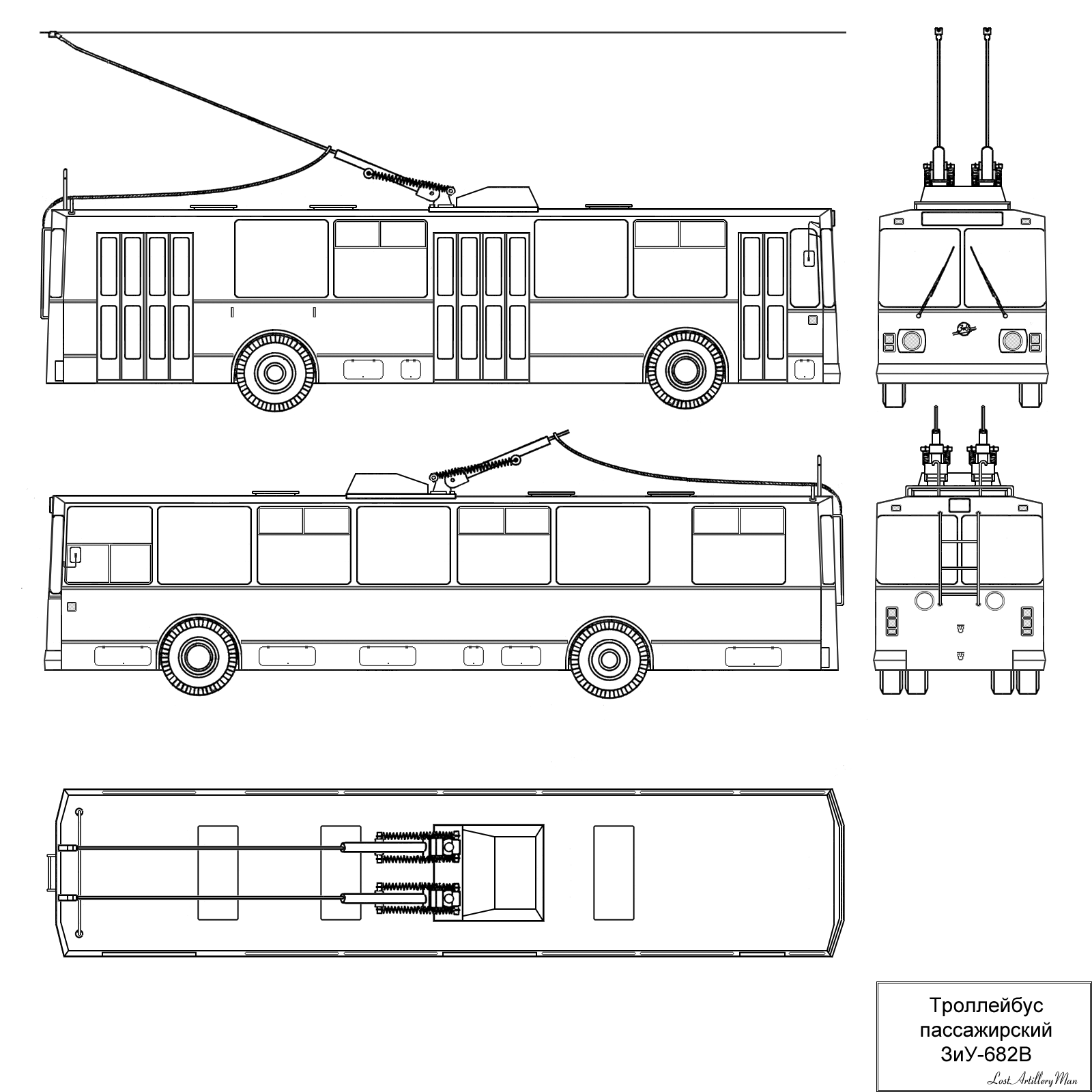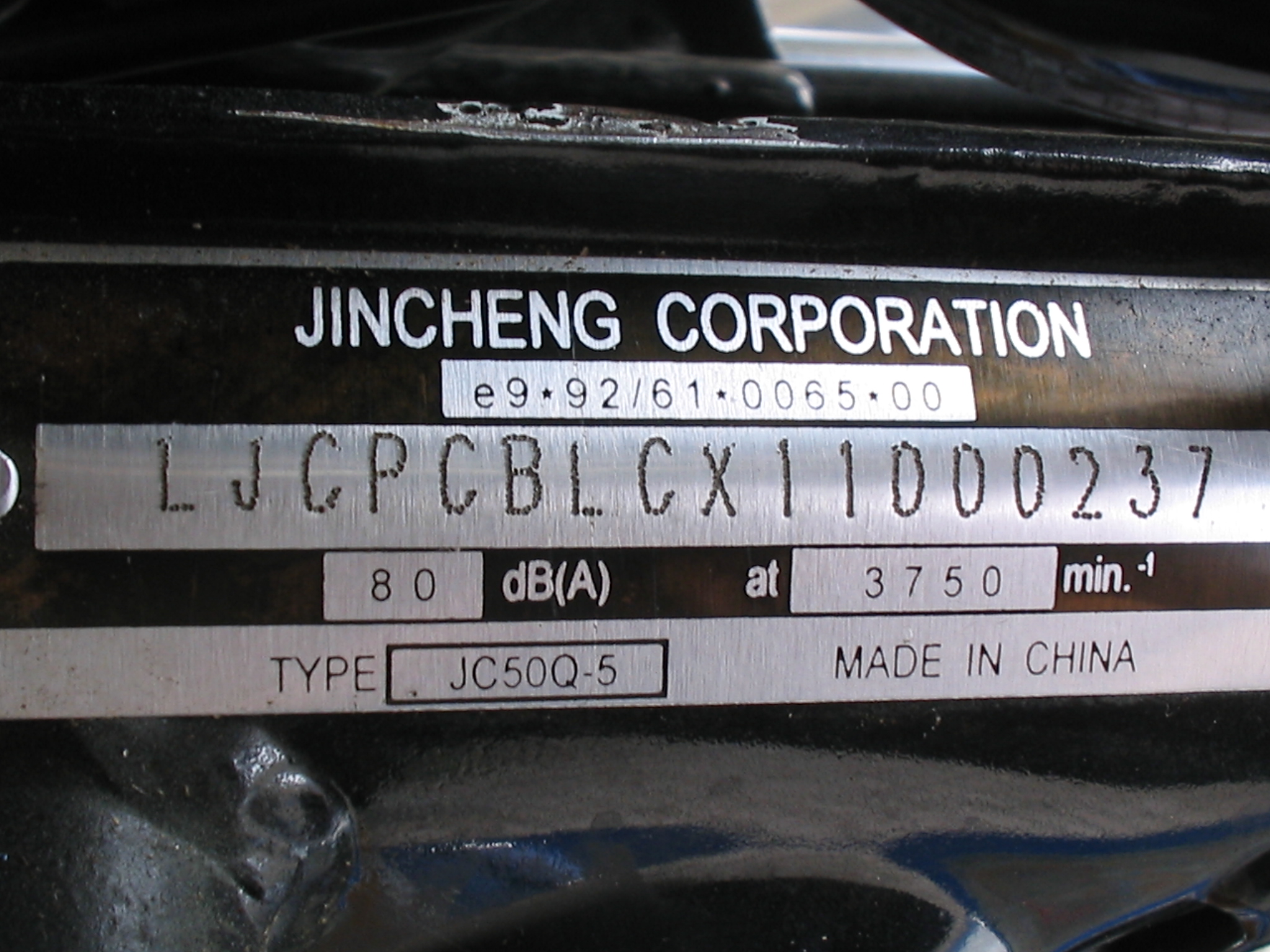|
ZIU-9
ZiU-9, or ZIU-9 (Cyrillic: ЗиУ-9) is a Soviet Union, Soviet (and later Russian) trolleybus. Other names for the ZiU-9 are ZiU-682 and HTI-682 (Cyrillic: ЗиУ-682 and ХТИ-682). The ZiU acronym stands for "Zavod imeni Uritskogo", which means a factory named after Moisei Uritsky, the Russian revolutionary. Before 1996 this acronym was also a trademark of the vehicle manufacturer ''Trolza''. The ZiU-9 was first built in 1966, although it was only put into mass production in 1972 and it was still assembled along with other more advanced trolleybus vehicles in the Trolza (former ZiU) factory until 2015. The total number of produced ZiU-9s exceeds 42,000 vehicles making it the most produced trolleybus in the world. Many copies of the ZiU-9 were made in other factories of the former Soviet bloc. Following the Soviet era, many cities still utilize the ZiU-9 as their primary trolleybus; for example Cheboksary, Ryazan, Vinnitsa and others. History and development The explosi ... [...More Info...] [...Related Items...] OR: [Wikipedia] [Google] [Baidu] |
Trolleybus
A trolleybus (also known as trolley bus, trolley coach, trackless trolley, trackless tramin the 1910s and 1920sJoyce, J.; King, J. S.; and Newman, A. G. (1986). ''British Trolleybus Systems'', pp. 9, 12. London: Ian Allan Publishing. .or trolleyDunbar, Charles S. (1967). ''Buses, Trolleys & Trams''. Paul Hamlyn Ltd. (UK). Republished 2004 with or 9780753709702.) is an electric bus that draws power from dual overhead wires (generally suspended from roadside posts) using spring-loaded or pneumatically raised trolley poles. Overhead line#Parallel overhead lines, Two wires, and two trolley poles, are required to complete the electrical circuit. This differs from a tram or streetcar, which normally uses the track as the return path, needing only one wire and one pole (or pantograph (transport), pantograph). They are also distinct from other kinds of Battery electric bus, electric buses, which usually rely on Automotive battery, batteries. Power is most commonly supplied as 600-volt ... [...More Info...] [...Related Items...] OR: [Wikipedia] [Google] [Baidu] |
ZiU-5
The ZiU-5 (in Russian ''ЗиУ-5'') is a Soviet Union, Soviet trolleybus model that was built by the Uritsky (company), Uritsky factory. The ZiU acronym stands for ''Zavod imeni Uritskogo'' (in Russian ''Завод имени Урицкого'', ''ЗиУ''), which translates as ''Plant named after Uritskiy'' (Moisei Uritsky, a Russian revolutionary). This model of city trolleybus was in mass production from 1959 to 1972. The total number of ZiU-5s produced exceeded 14,500 vehicles. This allowed the ZiU-5 to become dominant model of trolleybus in Soviet towns and cities of that time. The last vehicles were withdrawn from active service in the mid-1980s (the exact date varies from city to city). The small number of surviving vehicles are kept now for museum purposes. History of development The first decade after the Second World War was a period of huge expansion of trolleybus systems in the Soviet Union. They were considered as an innovative decision in comparison with "semi-obso ... [...More Info...] [...Related Items...] OR: [Wikipedia] [Google] [Baidu] |
Trolza
Trolza (), formerly known as the Uritsky factory or simply Uritsky,Bushell, Chris; and Stonham, Peter (eds.) (1987). ''Jane's Urban Transport Systems 1987'', pp. 603–605. London: Jane's Publishing Company. . was a trolleybus manufacturer in Russia, located in Engels, Saratov oblast. In the Soviet era it was known as ZiU (, Zavod imeni Uritskogo, plant named after Moisei Uritskiy) or Uritsky factory (plant). ZiU/Trolza has built over 65,000 trolleybuses. Historically, the most numerous models of ZiU production were the MTB-82, the ZiU-5 and the ZiU-9 (also known as the ZiU-682). The ZiU-9 is the most widely produced trolleybus in history. The factory has exported its production to various countries, including Argentina, Bulgaria, Colombia, Greece, Mongolia, Hungary, Serbia ''etc''. History The enterprise was founded in Imperial Russia in 1868, but it began producing trolleybuses in 1951.Semyonov, Nikolai (March–April 1994). "Russian and Soviet Trolleybus Production". ... [...More Info...] [...Related Items...] OR: [Wikipedia] [Google] [Baidu] |
Rheostat
A potentiometer is a three-terminal (electronics), terminal resistor with a sliding or rotating contact that forms an adjustable voltage divider. If only two terminals are used, one end and the wiper, it acts as a variable resistor or rheostat. The measuring instrument called a Potentiometer (measuring instrument), potentiometer is essentially a voltage divider used for measuring electric potential (voltage); the component is an implementation of the same principle, hence its name. Potentiometers are commonly used to control electrical devices such as volume controls on audio equipment. It is also used in speed control of fans. Potentiometers operated by a mechanism can be used as position transducers, for example, in a joystick. Potentiometers are rarely used to directly control significant power (more than a watt), since the power dissipated in the potentiometer would be comparable to the power in the controlled load. Nomenclature Some terms in the electronics industry used t ... [...More Info...] [...Related Items...] OR: [Wikipedia] [Google] [Baidu] |
VIN Code
A vehicle identification number (VIN; also called a chassis number or frame number) is a unique code, including a serial number, used by the automotive industry to identify individual motor vehicles, towed vehicles, motorcycles, scooters and mopeds, as defined by the International Organization for Standardization in ISO 3779 (content and structure) and ISO 4030 (location and attachment). There are vehicle history services in several countries that help potential car owners use VINs to find vehicles that are defective or have been written off. History VINs were first used in 1954 in the United States. From 1954 to 1965, there was no accepted standard for these numbers, so different manufacturers and even divisions within a manufacturer used different formats. Many were little more than a serial number. Starting in January 1966 the US Government mandated that a 13-character VIN be used. This specification was phased in over several years. US manufacturers used them starti ... [...More Info...] [...Related Items...] OR: [Wikipedia] [Google] [Baidu] |
Vidnoe LenKomsomola Street - Trolley02
{{SIA, populated places in Russia ...
Vidny (; masculine), Vidnaya (; feminine), or Vidnoye (; neuter) is the name of several inhabited localities in Russia. ;Urban localities *Vidnoye, Moscow Oblast, a town in Leninsky District of Moscow Oblast ;Rural localities * Vidny, Stavropol Krai, a settlement in Stavropolsky Selsoviet of Blagodarnensky District of Stavropol Krai * Vidny, Ulyanovsk Oblast, a settlement in Novoselkinsky Rural Okrug of Melekessky District of Ulyanovsk Oblast * Vidny, Voronezh Oblast, a settlement in Dobrinskoye Rural Settlement of Talovsky District of Voronezh Oblast * Vidnoye, Khabarovsk Krai, a '' selo'' in Vyazemsky District of Khabarovsk Krai Khabarovsk Krai (, ) is a federal subjects of Russia, federal subject (a krai) of Russia. It is located in the Russian Far East and is administratively part of the Far Eastern Federal District. The administrative centre of the krai is the types of ... [...More Info...] [...Related Items...] OR: [Wikipedia] [Google] [Baidu] |
Thyristor
A thyristor (, from a combination of Greek language ''θύρα'', meaning "door" or "valve", and ''transistor'' ) is a solid-state semiconductor device which can be thought of as being a highly robust and switchable diode, allowing the passage of current in one direction but not the other, often under control of a gate electrode, that is used in high power applications like inverters and radar generators. It usually consists of four layers of alternating P- and N-type materials. It acts as a bistable switch (or a latch). There are two designs, differing in what triggers the conducting state. In a three-lead thyristor, a small current on its gate lead controls the larger current of the anode-to-cathode path. In a two-lead thyristor, conduction begins when the potential difference between the anode and cathode themselves is sufficiently large (breakdown voltage). The thyristor continues conducting until the voltage across the device is reverse-biased or the voltage is removed (b ... [...More Info...] [...Related Items...] OR: [Wikipedia] [Google] [Baidu] |



